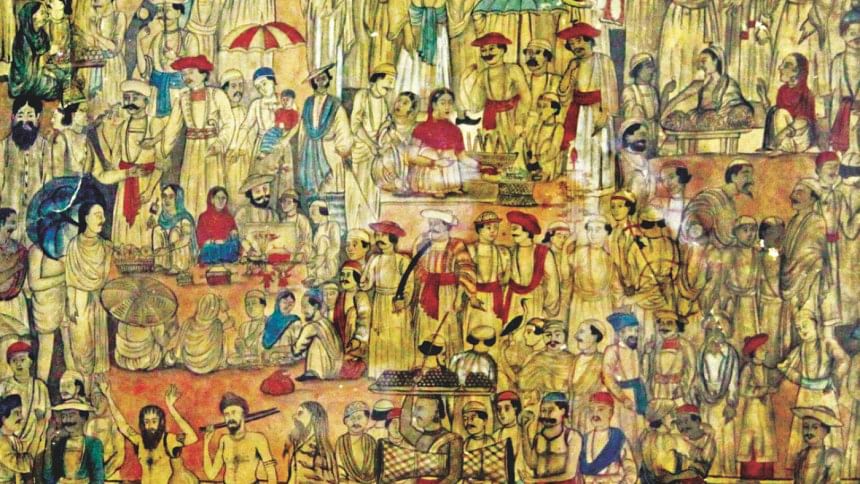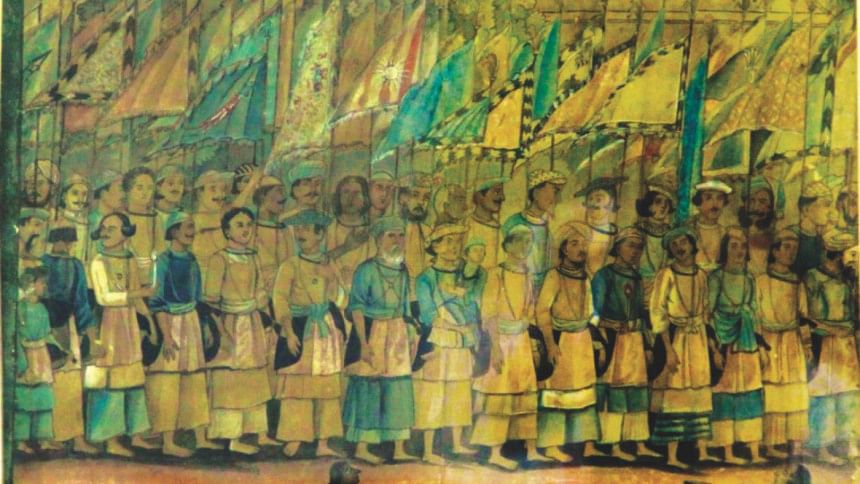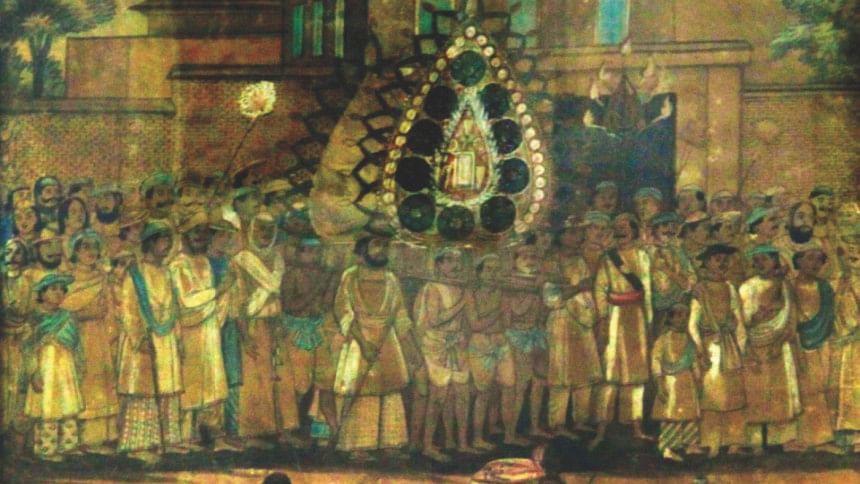Muharram in frames

Abul Hasnat, an aristocrat, was a generous host. For example, when he invited Ahmed Hasan Dani - historian and curator at Dhaka Museum (now Bangladesh National Museum) - he treated him with a lavish meal extravagant enough to match those of the culinary antiquities of the Nawabs of Dhaka.
Then, Abul Hasnat showed him his collection of Eid and Muharram paintings. They were a rare series, a set of artworks that is nothing short of an important visual historical documentation of the early nineteenth century Dhaka.
"Professor Dani, this is yours and you can take them," Abul Hasnat declared, to the astonishment of Dani. At that time, the museum was short of space. But such was the importance of these artworks, that the grateful Dani nevertheless found a way and hung them.
Before they were owned by Khan Sahib Moulavi Abul Hasnat Ahmed, the paintings were in possession of Nawab Shaista Khan's family at Choto Katra.

The watercolour paintings that portray Eid and Muharram processions in Dhaka were drawn in early 19th century. They are some of the earliest surviving paintings in watercolour from Bengal. "This series contains 39 pieces of water colour paintings on handmade paper of which 22 are of Eid procession and 17 are of Muharram procession," mentioned Najma Khan Majlis in the book Dhaka: Past, Present, Future. "These are of the average size of 24-by-18 inches."
The series was drawn by Alam Musabbir. However, the authorship is shrouded in mystery. Although we know just one name, Majlis thinks that "an examination of the minute details, difference of techniques and styles shows that a number of painters must have collaborated in these paintings."

Musabbir means 'painter'. So, was this an epithet? And we know next to nothing of the man, except that the enigmatic painter was a contemporary of Nayeb Nazim Nusrat Jung (approx. 1785-1823).
Is it possible that it was Nusrat Jung who commissioned these paintings? May be. After all, he was an art connoisseur.
"An admixture of European and oriental elements is noteworthy in the rendering of perspective as well as the predominance of red, blue, ochre, beige and sepia palette," wrote Majlis.
The paintings say a lot about the society and culture of those times, making them a must-see for those interested in the history of Dhaka - routes, buildings, attires, etc.
Wretched beggars are seen asking for alms whilst women and children watch over from their houses. Englishmen and half-naked men (probably 'sadhus') walk by. Women are also seen selling goods amidst Eid crowds.
In understanding these arts, we can use our common sense to deduce which one are Muharram paintings and which are works about Eid. For example, where we see people hugging each other, we can say that such works are on Eid.

The use of colours may be another indication. Some of the paintings are a whirlwind of activities and are vivid and merry, providing an aura of excitement. Some of the paintings look rather sombre, where more or less all men are walking barefooted. 'Tazia mubarak' are seen to be carried.
Some things never change. Even this year, we will see processions on this month of Muharram crying "Hussain! Hussain!" in anguish. Our Prophet's (SAW) grandson, along with family members and companions, were slain on this eventful month in the year 61AH (in the Islamic calendar) at Karbala.
Muslims all over the world, from that date and throughout history, have observed the event in different ways. And Alam Musabbir's paintings depict one such historic example.
Photo courtesy: Bangladesh National Museum
Sources of information: Dhaka in Early Nineteenth Century Paintings by Najma Khan Majlis, in the book named Dhaka: Past, Present, Future (edited by Sharif uddin Ahmed, published by Asiatic Society of Bangladesh) and Juga Juga Dhakar Eid Misel by Rafiqul Islam Rafiq.

 For all latest news, follow The Daily Star's Google News channel.
For all latest news, follow The Daily Star's Google News channel. 




Comments